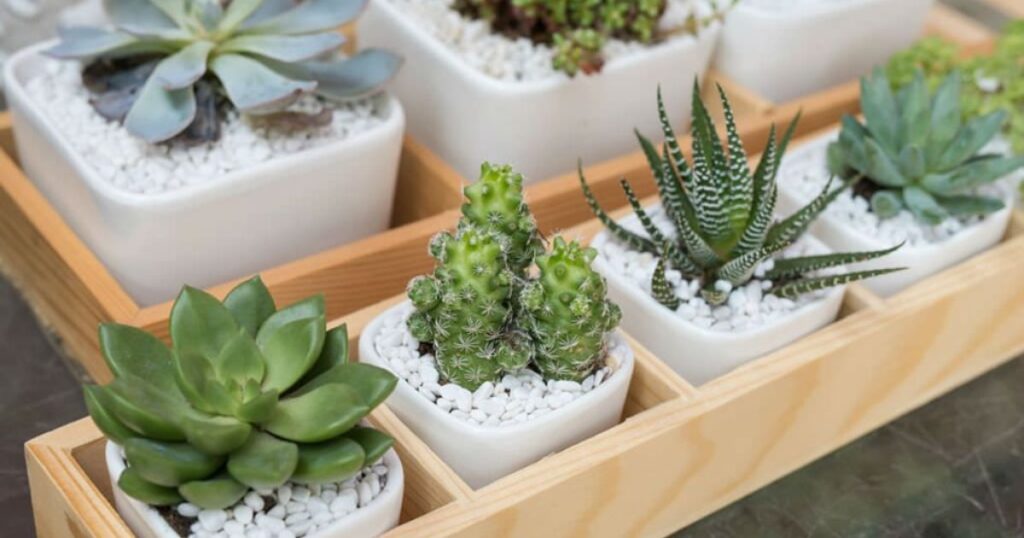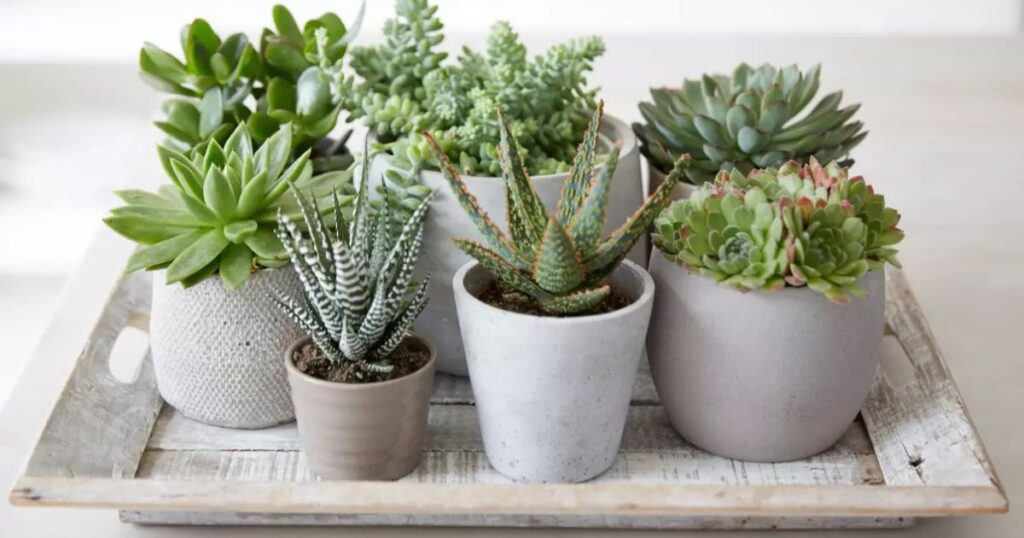Are you a succulent enthusiast seeking to provide the best care for your plants? One question that often arises is whether all succulents thrive in full sun. In this article, we will explore the varying sun requirements of different succulent species, helping you understand which ones prefer full sun and which ones prefer partial shade. Additionally, we will discuss the sun requirements for indoor succulents and provide tips on protecting your succulents from intense sunlight. By understanding the specific needs of your succulents, you can ensure they receive the optimal amount of sunlight for their growth and overall health. Join us as we delve into the fascinating world of succulents and their sun preferences.
Key Takeaways
- Some succulents, such as Agave, Echeverias, Sedum, Aloe, and Crassula, thrive in full sun and can withstand direct sunlight and drought conditions.
- Other succulents, like Haworthia, Gasteria, and Rhipsalis, prefer partial shade or filtered sunlight and can tolerate low light conditions.
- When growing succulents indoors, it is important to provide adequate sunlight, either through a window or artificial lighting.
- Protecting succulents from intense sunlight is crucial to prevent sunburn, leaf discoloration, and damage, and can be achieved through natural or artificial shade.
Types of Succulents That Thrive in Full Sun
Several sun-loving succulent varieties thrive in full sun conditions. These drought-tolerant succulents have adapted to arid environments and are well-suited to receiving direct sunlight for extended periods. One such succulent is the Agave plant, which is native to the desert regions of Mexico and the southwestern United States.
Its thick, fleshy leaves are capable of storing water, allowing it to withstand long periods without rainfall. Another sun-loving succulent is the Echeveria, a popular choice among gardeners for its rosette-shaped leaves and vibrant colors. Echeverias can tolerate intense sunlight due to their ability to close.
Their leaves reduce water loss through transpiration. Other examples of sun-loving succulents include Sedum, Aloe, and Crassula. These plants have evolved to thrive in full sun conditions, making them ideal choices for those seeking to create a beautiful and resilient garden.
Succulents That Prefer Partial Shade
Preferring partial shade, some succulents thrive when they receive a moderate amount of sunlight. These shade-loving succulents have adapted to survive in environments with lower light levels, making them excellent choices for indoor spaces or areas with filtered sunlight. Here are three different varieties of succulents that prefer partial shade:
- Haworthia: Known for their rosette-shaped leaves, Haworthia succulents prefer bright, indirect light or partial shade. They can tolerate low light conditions, making them ideal for indoor settings.
- Gasteria: Gasteria succulents are great for partial shade as they can handle less intense sunlight. They have thick, fleshy leaves arranged in a rosette formation and can thrive in indoor spaces with bright, indirect light.
- Rhipsalis: Rhipsalis succulents are epiphytic plants that naturally grow in the shade of other plants or trees. They prefer partial shade or filtered sunlight and are well-suited for hanging baskets or indoor spaces.
To provide shade for succulents, consider using sheer curtains, window films, or placing them near north-facing windows. These methods help filter the sunlight, ensuring the succulents receive the right amount of light without being exposed to intense rays.
Additionally, providing shade through the use of shade cloths or umbrellas in outdoor spaces can protect succulents from direct Succulents Outside to the Sun during the hottest parts of the day.
Sun Requirements for Indoor Succulents

Indoor succulents have specific sun requirements that must be considered for their optimal growth and health. While succulents are known for their ability to thrive in sunlight. It is important to understand that not all succulents can tolerate direct sunlight, especially when grown indoors.
Inadequate sunlight can lead to elongated stems and pale leaves, while excessive sunlight can cause sunburn and damage to the plant. To provide the necessary sunlight for indoor succulents, artificial lighting can be used as a supplement. LED grow lights, for example, can provide the right spectrum of light needed for succulent growth.
Common mistakes in providing sun exposure for indoor succulents include placing them too far from a window or not rotating them regularly to ensure even sunlight distribution. Understanding the sun requirements of indoor succulents and providing appropriate lighting can promote their well-being and help them thrive. Now, let’s discuss how to protect succulents from intense sunlight.
How to Protect Succulents From Intense Sunlight
To ensure the health and well-being of succulents, it is essential to take measures to protect them from the intense sunlight they may encounter. Intense sunlight can have a significant impact on succulent growth and health, causing sunburn, leaf discoloration, and even death. Here are three effective ways to provide shade for succulents during the hottest part of the day:
- Natural shade: Utilize nearby structures, trees, or shrubs to create natural shade for your succulents. This can be done by strategically placing them in areas where they can benefit from the shade provided by these objects.
- Artificial shade: Use shade cloth or sheer curtains to filter the intensity of sunlight. These materials can be placed over the succulents or on windows to create a barrier between the plants and the sun.
- Shade structures: Install shade structures such as pergolas, arbors, or umbrellas to provide a permanent source of shade for your succulents. These structures can be customized to fit your garden design and offer protection from intense sunlight throughout the day.
Tips for Finding the Perfect Sun Exposure for Your Succulents

Succulents, like many other plants, require specific amounts of sunlight to thrive, and finding the perfect sun exposure for your succulents is crucial for their overall health and growth. When it comes to providing sun exposure for succulents, there are common mistakes that many people make.
One common mistake is exposing succulents to too much direct sunlight, which can lead to sunburn and damage. It is important to gradually introduce succulents to full sun and provide them with some shade during the hottest parts of the day. On the other hand, insufficient sunlight can also be detrimental to succulents.
Causing them to become etiolated or stretched out. To prevent sun damage in succulents, it is important to monitor their appearance for signs of burning or discoloration and adjust their sun exposure accordingly. Providing the perfect amount of sunlight for your succulents will help ensure their optimal growth and longevity.
Frequently Asked Questions
Is it OK to put succulents in direct sunlight?
Yes, many succulents thrive in direct sunlight. They typically require at least 6 hours of sunlight per day to grow healthily.
Which succulents don’t like direct sun?
Some succulents, like Haworthia and Gasteria, prefer indirect or filtered sunlight rather than direct sun exposure. They often grow better in partial shade.
Can a succulent get too much sun?
Yes, succulents can get sunburned if exposed to intense sunlight for prolonged periods, especially if they are not acclimated to it. Signs of sun damage include discoloration, shriveling, or brown spots on the leaves. It’s essential to monitor their response to sunlight and provide shade if necessary.
Conclusion
In conclusion, while not all succulents thrive in full sun, many varieties do prefer this type of sunlight exposure. Understanding the specific requirements of different succulent species is crucial for their overall health and growth. It is interesting to note that approximately 70% of succulents are known to thrive in full sun, making them a popular choice for outdoor gardens and landscaping projects.










